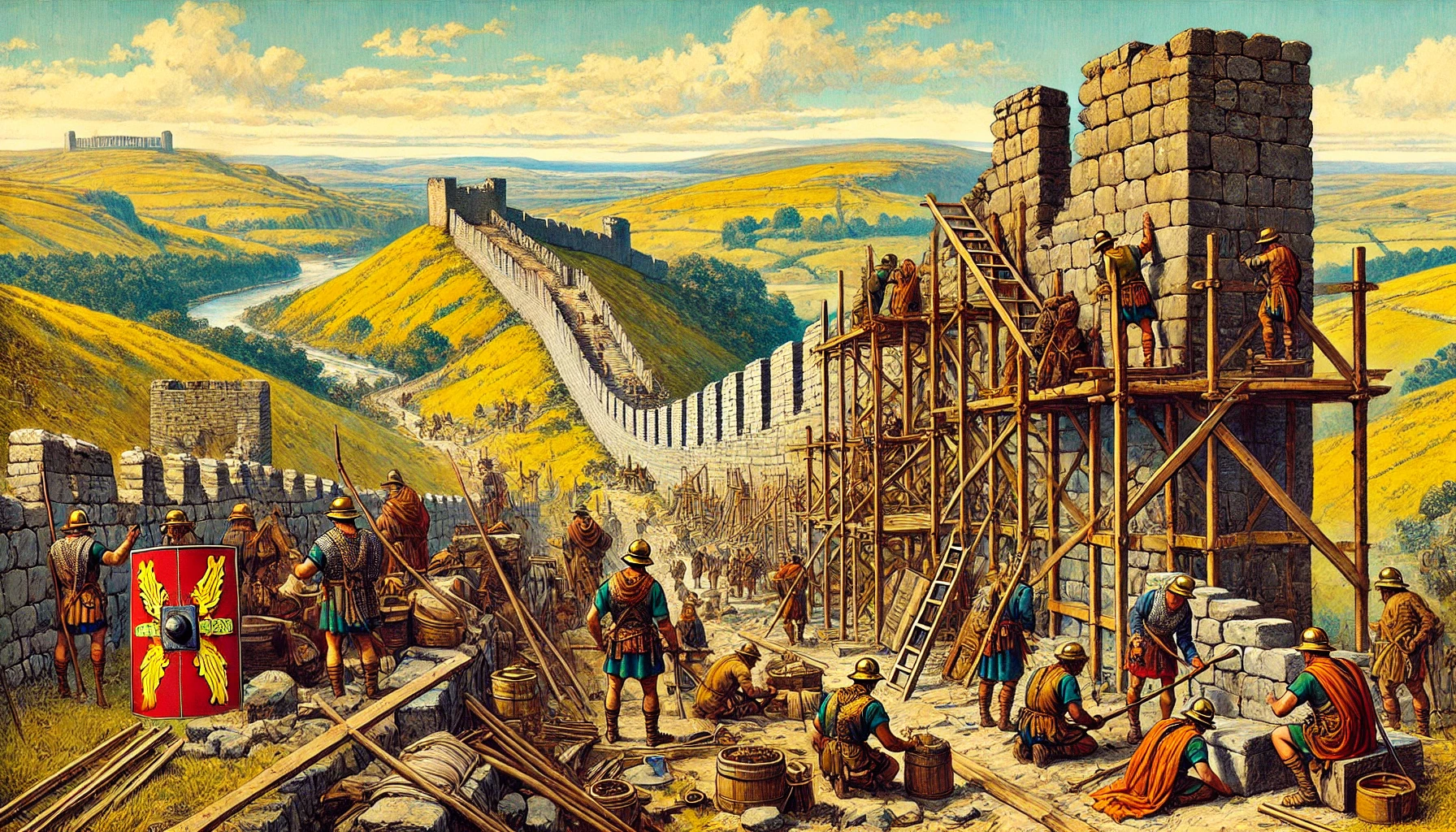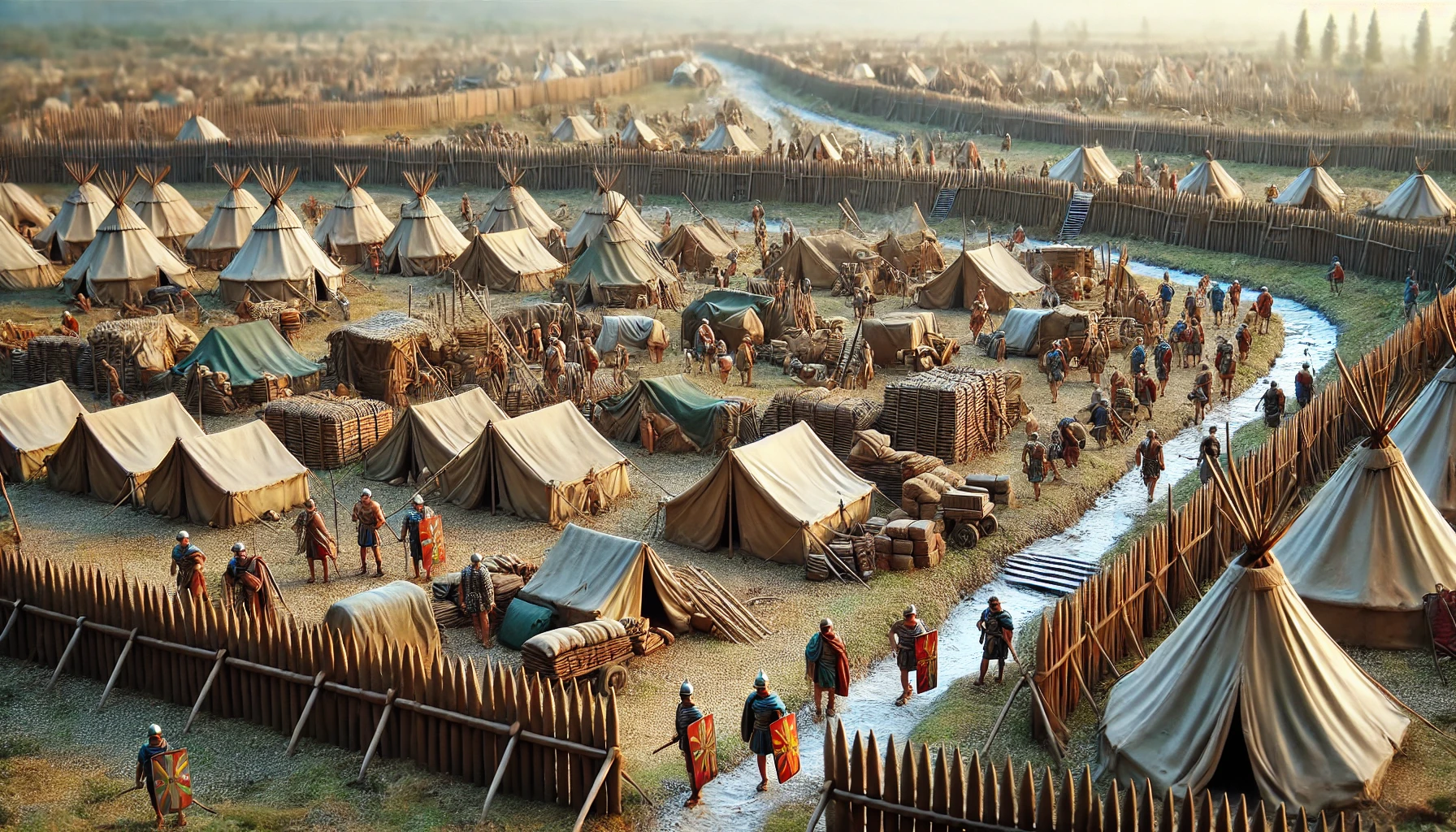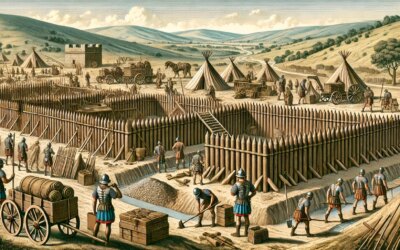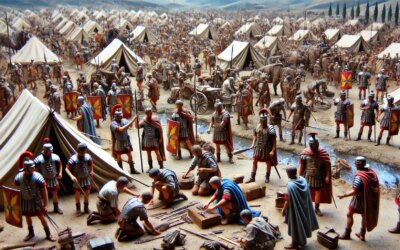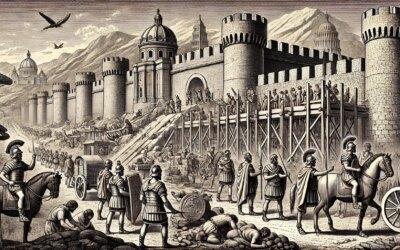Hadrian’s Vision: Securing the Edge of the Empire
By the early 2nd century AD, Rome’s expansion in Britain had reached its limits. The northern tribes, particularly the Picts, posed a constant threat to Roman settlements. In response, Emperor Hadrian ordered the construction of a massive fortification in 122 AD to mark and defend the empire’s northern boundary.
Engineering the Wall
Stretching 73 miles (117 km) across northern Britain, Hadrian’s Wall was a monumental feat of Roman engineering. Built primarily of stone and turf, it featured a deep ditch on the northern side, reinforcing its defensive purpose. The wall was punctuated by forts, milecastles, and turrets, ensuring constant surveillance and rapid troop deployment.
The Role of the Roman Legions
The construction was carried out by the legions stationed in Britain, including Legio II Augusta, Legio VI Victrix, and Legio XX Valeria Victrix. Skilled engineers, masons, and soldiers worked relentlessly to complete the fortification in under six years, a testament to Roman logistical efficiency.
Life Along the Wall
Hadrian’s Wall was not just a military structure but a dynamic frontier zone. Garrisons housed Roman soldiers, traders, and even local Britons who lived in settlements nearby. The fortifications provided a stable presence, facilitating trade and cultural exchanges between Romans and native tribes.
The Wall’s Long-Term Impact
Hadrian’s Wall remained a key defensive structure for nearly 300 years. Even after the fall of Roman Britain in the early 5th century, its presence shaped the landscape and inspired future fortifications. Today, its ruins stand as one of Britain’s most significant Roman legacies.
A Lasting Monument to Roman Ambition
More than just a barrier, Hadrian’s Wall symbolized the limits of Rome’s ambition. It was a declaration of control, engineering prowess, and the challenges of governing an empire at its peak.

